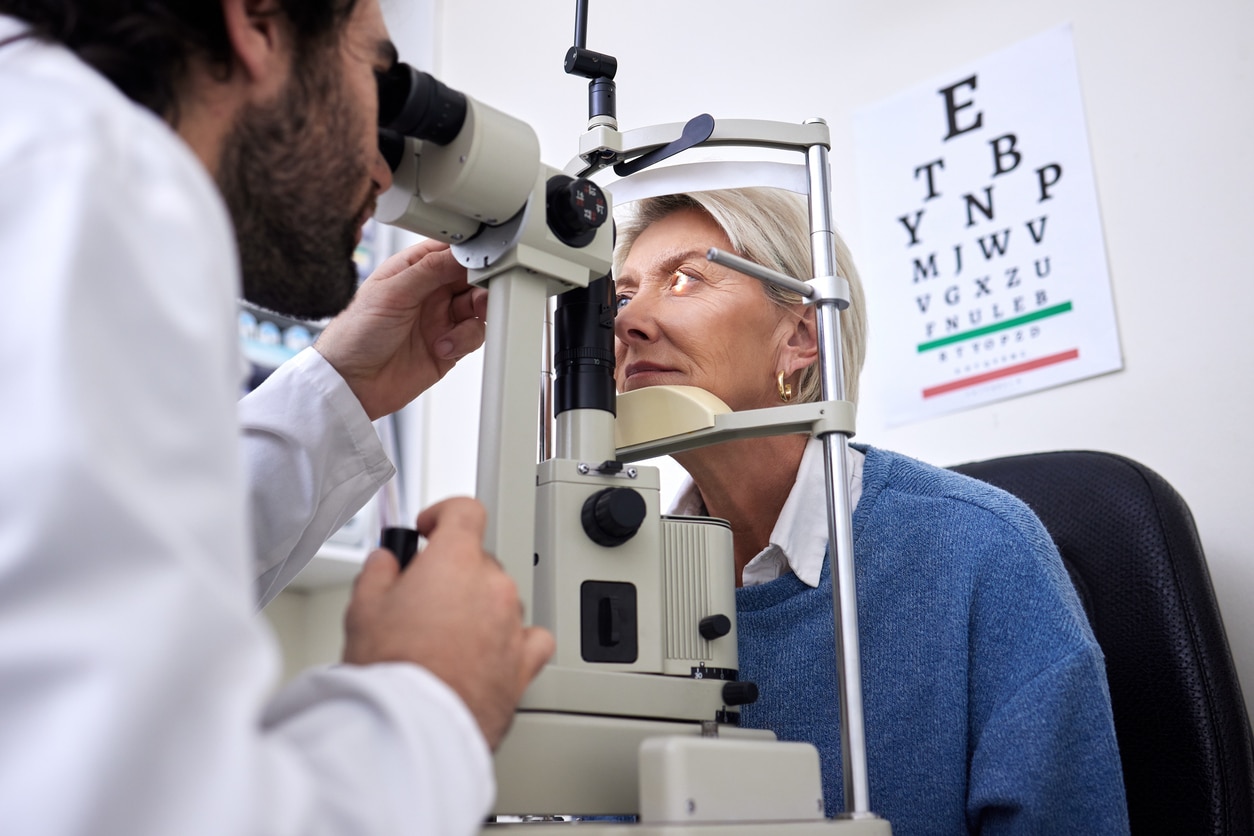Provo Asks: What is Age-Related Macular Degeneration (AMD)?
One of the leading causes of vision loss in people who are age 50 or older is age-related macular degeneration (AMD). This common eye condition leads to damage to a small spot near the center of the retina called the macula. The macula provides us with the ability to clearly see objects that are straight ahead.
AMD may progress very slowly, with vision loss taking a long time to occur. In some people, though, the disease may advance more quickly. It can affect one or both eyes. Due to the nature of the disease, it is important to catch it as early as possible to preserve your vision, which is why regular eye exams are important.

What is the Difference Between Dry and Wet Macular Degeneration?
The two most common types of macular degeneration are “dry” (atrophic) and “wet” (exudative). Nine out of 10 AMD patients have the dry form, which results in the thinning of the macula, the area of the retina responsible for central vision. Dry degeneration takes many years to develop and vision loss is usually gradual.
The wet form occurs much less frequently (one of 10 patients with AMD) but is more serious. Abnormal blood vessels form underneath the retina at the back of the eye and these blood vessels leak fluid or blood and blur central vision. Vision loss is rapid and severe.
What are the Risk Factors for Macular Degeneration?
How is Macular Degeneration Treated?
Currently, dry macular degeneration does not have a specific treatment. Still, there are remedial measures, such as supplements, that can delay or possibly prevent the progression from intermediate to advanced stages where vision loss occurs. It is crucial to schedule regular follow-up appointments to monitor for any changes from dry to wet macular degeneration.
In contrast, treating wet macular degeneration involves using prescription medication injected into the eye. Anti-vascular endothelial growth factor agents are used to inhibit the growth of abnormal blood vessels beneath the retina and help improve vision. Early detection of bleeding in wet macular degeneration is important, as it can lead to irreversible scarring. Patients may need to undergo multiple injections to manage their macular degeneration effectively.

Provo’s Macular Degeneration FAQs
One of the first symptoms of AMD is a blurry area in the center of your field of vision. Over time, this blurred region may increase in size. You may also develop blank spots near the center of your vision. In addition, objects may not be as bright as they once were. AMD does not lead to complete loss of vision. However, the central vision affected by AMD is needed for many everyday activities, such as reading, writing, recognizing other people’s faces, driving a car, cooking, or fixing things around the house.
Yes, macular degeneration tends to run in families, but external causes such as smoking and diet can be risk factors as well.
While macular degeneration is not always hereditary, a family history of the condition is considered a risk factor due to genetic influences. Certain genes, such as factor H and factor B, that regulate inflammation in the immune system can increase the risk of developing AMD.
There are over 30 genes associated with the condition, and around 15 to 20 percent of individuals with AMD have a first-degree relative also affected. Ethnicity and familial history can contribute to the prevalence of AMD, as observed through genome-wide association studies that identify genetic factors linked to the risk of AMD.
If you’re wondering how to prevent macular degeneration, the best first step is to schedule an appointment with our optometrists.
In early AMD, individuals may not experience symptoms, but as the condition progresses into the intermediate stage, symptoms such as central vision blurriness and difficulty seeing in low lighting may become noticeable. In the later stages of dry or wet AMD, symptoms like distorted vision, blank spots in central vision, dimmed colors, and challenges with low-light visibility can occur. Regular eye exams are essential, especially for those with a family history of AMD or other risk factors, as early detection can help manage the condition.
While there is no cure for AMD, maintaining a healthy lifestyle, avoiding smoking, and taking specific nutritional supplements can help slow its progression, and not all cases of early AMD develop into late-stage AMD or blindness. Speak to our eye care team today to create a plan for supporting your optimal visual health.
Request an Appointment
At Eye Clinic & Aesthetics of Provo, we believe in comprehensive preventative care. We work in-depth with our patients to address their concerns and help them see as clearly as possible, putting comfort and education at the forefront of our practice.
If you are experiencing issues with your vision, schedule an appointment at the Eye Clinic & Aesthetics of Provo. Our comprehensive eye exams help detect problems, such as macular degeneration in the early stages and we can help you stay on top of your ocular health. Call (801) 373-4550 or request an appointment using the link below.
